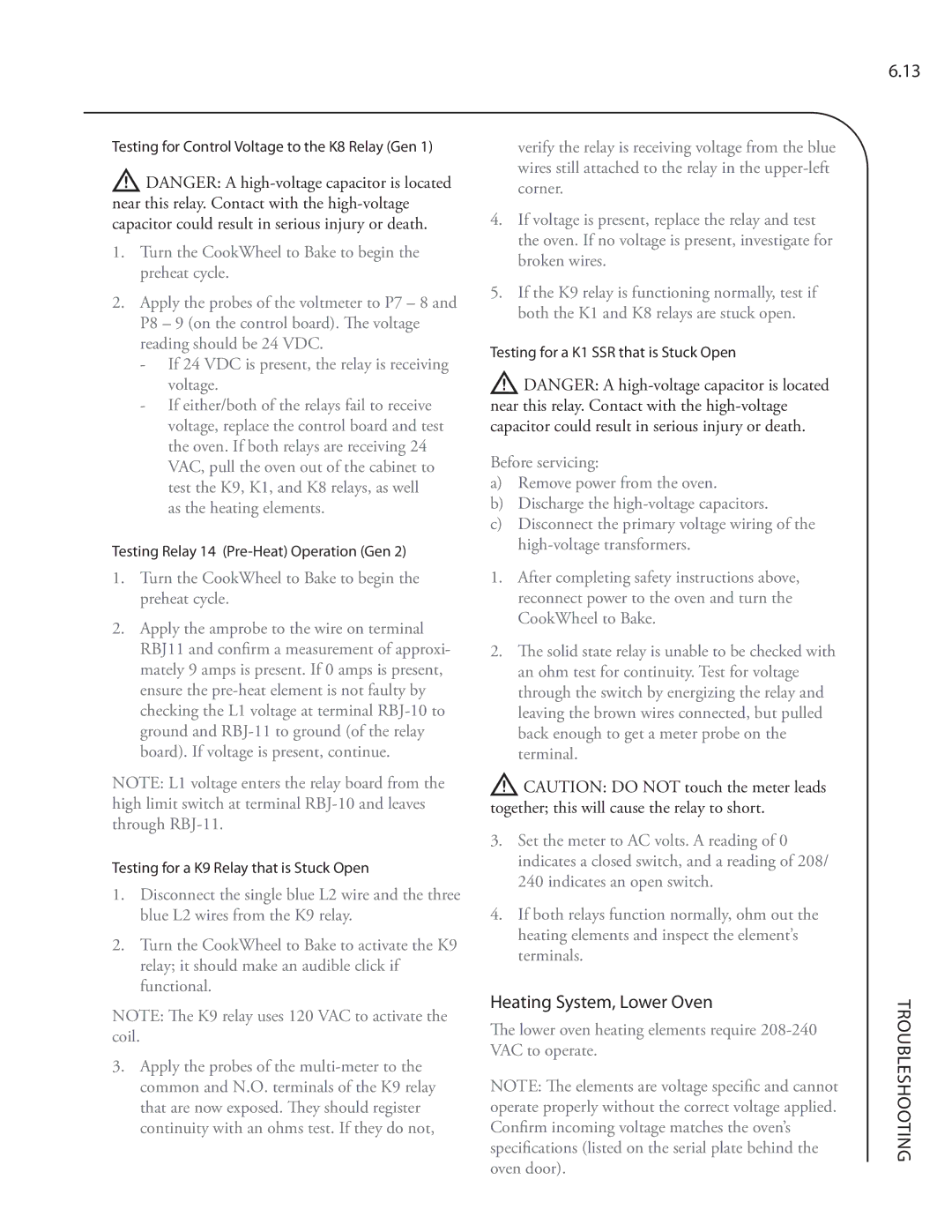
Testing for Control Voltage to the K8 Relay (Gen 1)
![]() DANGER: A
DANGER: A
1.Turn the CookWheel to Bake to begin the preheat cycle.
2.Apply the probes of the voltmeter to P7 – 8 and P8 – 9 (on the control board). The voltage reading should be 24 VDC.
-If 24 VDC is present, the relay is receiving voltage.
-If either/both of the relays fail to receive voltage, replace the control board and test the oven. If both relays are receiving 24 VAC, pull the oven out of the cabinet to test the K9, K1, and K8 relays, as well as the heating elements.
Testing Relay 14
1.Turn the CookWheel to Bake to begin the preheat cycle.
2.Apply the amprobe to the wire on terminal RBJ11 and confirm a measurement of approxi- mately 9 amps is present. If 0 amps is present, ensure the
NOTE: L1 voltage enters the relay board from the high limit switch at terminal
Testing for a K9 Relay that is Stuck Open
1.Disconnect the single blue L2 wire and the three blue L2 wires from the K9 relay.
2.Turn the CookWheel to Bake to activate the K9 relay; it should make an audible click if functional.
NOTE: The K9 relay uses 120 VAC to activate the coil.
3.Apply the probes of the
verify the relay is receiving voltage from the blue wires still attached to the relay in the
4.If voltage is present, replace the relay and test the oven. If no voltage is present, investigate for broken wires.
5.If the K9 relay is functioning normally, test if both the K1 and K8 relays are stuck open.
Testing for a K1 SSR that is Stuck Open
![]() DANGER: A
DANGER: A
Before servicing:
a)Remove power from the oven.
b)Discharge the
c)Disconnect the primary voltage wiring of the
1.After completing safety instructions above, reconnect power to the oven and turn the CookWheel to Bake.
2.The solid state relay is unable to be checked with an ohm test for continuity. Test for voltage through the switch by energizing the relay and leaving the brown wires connected, but pulled back enough to get a meter probe on the terminal.
![]() CAUTION: DO NOT touch the meter leads together; this will cause the relay to short.
CAUTION: DO NOT touch the meter leads together; this will cause the relay to short.
3.Set the meter to AC volts. A reading of 0 indicates a closed switch, and a reading of 208/ 240 indicates an open switch.
4.If both relays function normally, ohm out the heating elements and inspect the element’s terminals.
Heating System, Lower Oven
The lower oven heating elements require
NOTE: The elements are voltage specific and cannot operate properly without the correct voltage applied. Confirm incoming voltage matches the oven’s specifications (listed on the serial plate behind the oven door).
6.13
TROUBLESHOOTING
